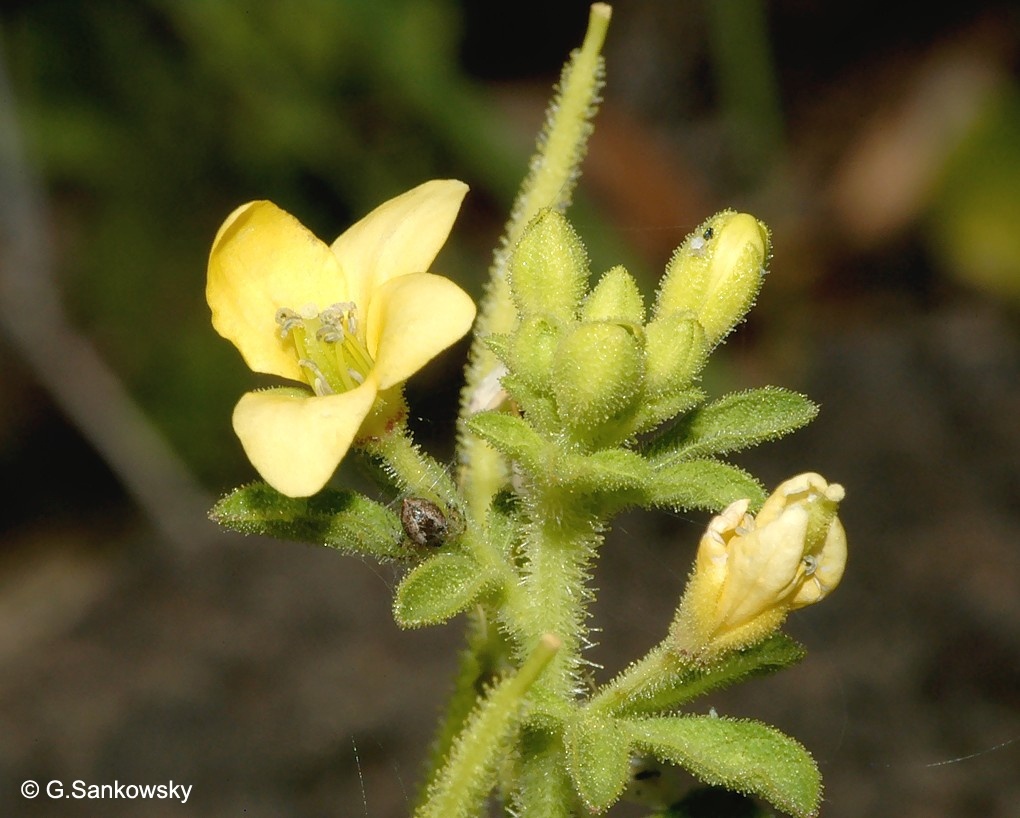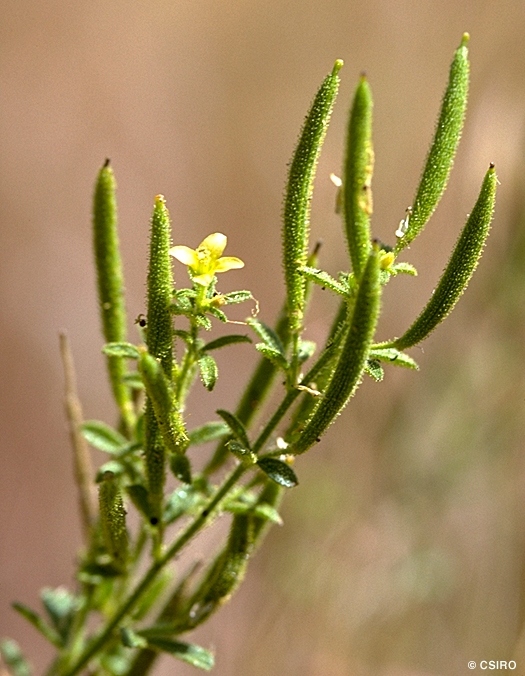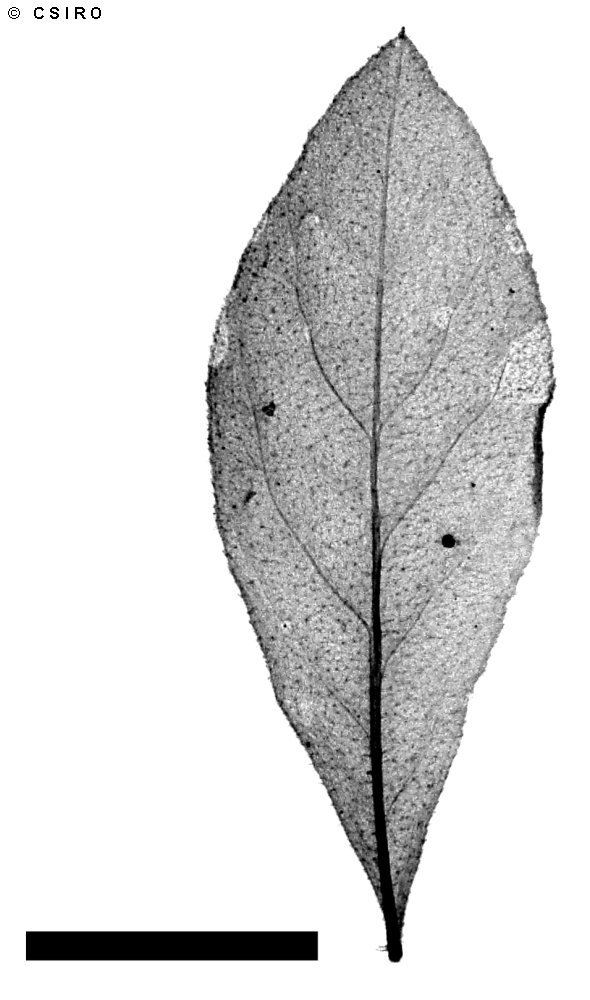Australian Tropical Rainforest Plants - Online edition
Cleome viscosa L.





Linnaeus, C. von (1753) Species Plantarum 2: 672. Type: Ceylon (Sri Lanka) & India; holo: ?.
Spider Flower; Wild Caia; Mustard Bush; Tick Weed
Usually flowers and fruits as a herb but sometimes flowers at a height of 1-1.5 m.
Usually five leaflets per compound leaf. Leaflet blades about 6-20 x 5-15 mm. Glandular, sticky-topped hairs present on the twigs, petioles and both the upper and lower surfaces of the leaflet blades. Lateral veins depressed on the upper surface of the leaflet blade, curving inside the margin but not forming loops.
Pedicels and calyx clothed in sticky, glandular hairs. Stamens about 14-16 arranged in two whorls. Ovary elongated, clothed in pale yellowish glands arranged in four vertical rows, two thick and two thin. Ovules attached to two placentas, one on each side of the ovary. Stigma capitate, +/- 2-lipped and hairy.
Cotyledons about 5-6 x 3-4 mm, petiole about 4.5-7 mm long. First pair of leaves clothed in erect glandular hairs. Leaflets of the first pair of leaves about 6-7 x 3 mm, stalks very short. Compound leaf petiole about 7-8 mm long. At the tenth leaf stage: all parts of the plant clothed in sticky glandular hairs. Leaflet margins 'toothed' but the 'teeth' are thickened surface projections and thick glandular hairs. Seed germination time 14 to 533 days.
Occurs in WA, NT, CYP, NEQ, CEQ and southwards as far as New South Wales. Altitudinal range from near sea level to 800 m. Usually grows in open forest or similar vegetation types but also found in vine thickets and monsoon forest. Also occurs in Africa, Asia and the Americas either naturally or as an introduction.
This plant was used by the Aborigines to relieve headaches, and in some Asian countries has been used as a counter-irritant for painful joints. The plant has some reputation for use in treating intestinal worms. Cribb (1981).





